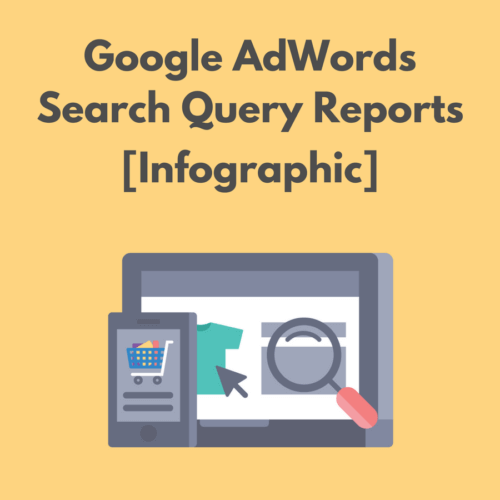
‘There is no such thing as a permanent advertising success.’ – Leo Burnett
True! As advertisers, we’re always trying to find new and innovative ways to showcase our products. Sometimes it isn’t just about the “look and feel” of our products, but the placement of them as well.
Where can we put our products and ads so that they stand out to our customers?
For example, in a grocery store, this is the equivalent to learning whether we should be placing our products on an end-cap display, up front by the register, or in a “bull’s eye zone.”
With digital advertising – we learn where to “place” our products by using our existing data to make assumptions about our customers’ behavior. Where are they looking for our product? When is the right time for them to receive messaging about our product? Which search queries am I ignoring and what keywords can I add into the negatives list?
This is where Google Ads Search Query reports come into picture. Search Term reports show you what users were actually searching for when your ad was triggered. They give you insight into how your customers search. They can even generate ideas for new keywords you may have missed and also allow you to exclude irrelevant keywords. They keep your account focused and ensure your ad dollars are going to the most qualified people.
Find the complete guide to Google Ads Search Terms Reports here.
This video talks about how to find and run an Google Ads Search Term Report.

Here are the instructions to create and sort the Google Ads Search Query Reports:
- To conduct a search term report, go to the Keywords tab and select Details> Search Terms> All.
- The search terms people were using when your ad was triggered will appear in the first column.
- Go to Columns> Customize Columns> Attributes.
- Choose “Add” next to the Keyword option and select “Apply.”
- In the far right corner, you can now see which keyword you have programmed that triggered your ad to show for a search.
- Sort your STR by a number of impressions, clicks, or spend to see which search terms are getting the most traffic (Select Clicks, Impressions, or Cost).
- To add or exclude a keyword, select the keyword checkbox and choose either “Add as keyword” or “Add as negative keyword.”
- If you are adding a negative keyword, you have the option to add it at the ad group or campaign level, or you can add it to an existing negative keyword list.
- Don’t forget to save your settings.
- It is recommended to conduct a search term report at least once a month. If there is not enough data to support an STR, try expanding your date range in the upper right corner.
This infographic clearly talks about the process to be followed to create an Google Ads search terms report and the different methods available to analyze this report and act on the insights found.

I. Google Ads Search Query Reports help you find New Keyword Opportunities
The Google Ads search query reports are full of new keyword opportunities, especially if your campaign is full of broad and phrase matched keywords. You’ll want to look through the report for queries that performed well and aren’t yet in your campaign as exact match keywords.
To find keyword opportunities in your report:
- Filter the report so only broad and phrase match keywords are being shown. This way you can skip the exact match keywords that are already in your campaign.
- Sort by highest clicks or highest conversions to see which queries are performing best.
- Starting from the top, review the search queries in each row. Look at their CTR and conversion rates and compare them to other rows to gauge the quality of the keyword.
- Note which keywords are performing well and add them as exact match keywords. This way you can ensure your ads display for these queries in the future.
II. Google Ads Search Query Reports help you find Negative Keywords
The Google Ads search query reports can also reveal negative keyword opportunities, especially if your campaign is full of broad and phrase matched keywords. You’ll want to look through the report for irrelevant queries that you want to avoid advertising on in the future.
Find these negatives to boost CTR & Quality Score and also to save money and lower CPA by sorting the data by highest impressions and highest spend respectively. Then, starting from the top review the search queries in each row. Look at their CTR, conversions and conversion rate and compare them to other rows to gauge the quality of the keyword. If the queries are irrelevant and aren’t resulting in conversions, you can add them as negative keywords. When you add negative keywords using this data, you’ll directly improve your CTR, quality score and cost per conversion.
The Google Ads Search Query Reports are highly valuable reports. They contain detailed information about your keywords and how well they are performing against users’ search terms. It’s vital to optimize your keywords to ensure your ad is being triggered by relevant search terms. You can also use the STR to identify new keyword opportunities and the negative keywords you don’t want to trigger your ad.
Learn more about how you can automate your Google Ads Client Reporting!
This post is a part of a blog series on Marketing Success by ReportGarden, a PPC & Google Ads Client Reporting Tool. You can try it for free here.

.png)




